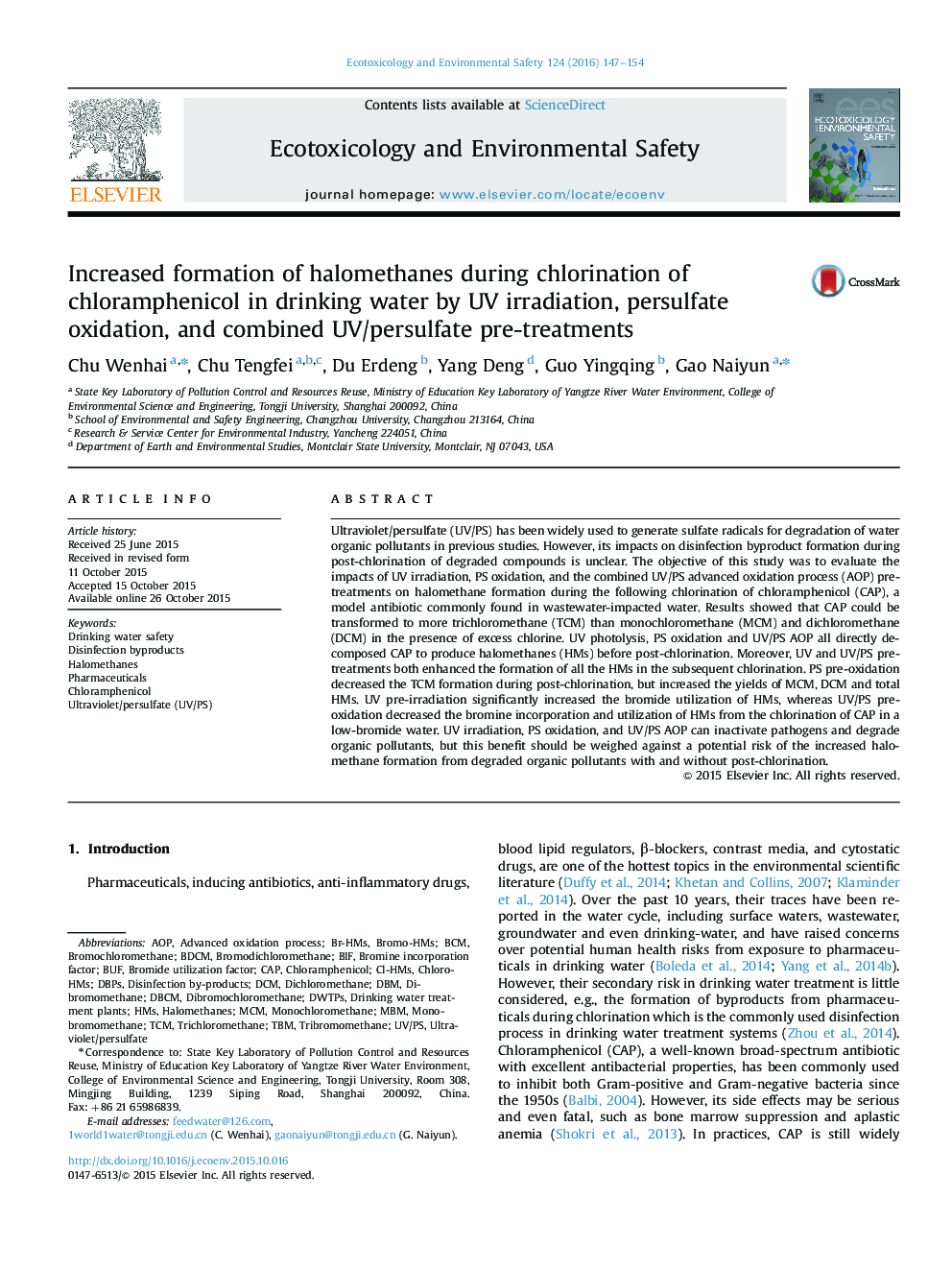| کد مقاله | کد نشریه | سال انتشار | مقاله انگلیسی | نسخه تمام متن |
|---|---|---|---|---|
| 6312038 | 1618939 | 2016 | 8 صفحه PDF | دانلود رایگان |

- Low-pressure UV disinfection photolyze chloramphenicol (CAP) to form halomethanes.
- Persulfate (PS) or combined UV/PS removed CAP, but formed halomethanes (HMs).
- UV and/or PS increased HM yields in post-chlorination but PS reduced TCM yields.
- UV increased Br-HMs and total HMs from CAP chlorination in waters rich in bromide.
- UV/PS changed Br incorporation and utilization factors of HMs from CAP chlorination.
Ultraviolet/persulfate (UV/PS) has been widely used to generate sulfate radicals for degradation of water organic pollutants in previous studies. However, its impacts on disinfection byproduct formation during post-chlorination of degraded compounds is unclear. The objective of this study was to evaluate the impacts of UV irradiation, PS oxidation, and the combined UV/PS advanced oxidation process (AOP) pre-treatments on halomethane formation during the following chlorination of chloramphenicol (CAP), a model antibiotic commonly found in wastewater-impacted water. Results showed that CAP could be transformed to more trichloromethane (TCM) than monochloromethane (MCM) and dichloromethane (DCM) in the presence of excess chlorine. UV photolysis, PS oxidation and UV/PS AOP all directly decomposed CAP to produce halomethanes (HMs) before post-chlorination. Moreover, UV and UV/PS pre-treatments both enhanced the formation of all the HMs in the subsequent chlorination. PS pre-oxidation decreased the TCM formation during post-chlorination, but increased the yields of MCM, DCM and total HMs. UV pre-irradiation significantly increased the bromide utilization of HMs, whereas UV/PS pre-oxidation decreased the bromine incorporation and utilization of HMs from the chlorination of CAP in a low-bromide water. UV irradiation, PS oxidation, and UV/PS AOP can inactivate pathogens and degrade organic pollutants, but this benefit should be weighed against a potential risk of the increased halomethane formation from degraded organic pollutants with and without post-chlorination.
200
Journal: Ecotoxicology and Environmental Safety - Volume 124, February 2016, Pages 147-154